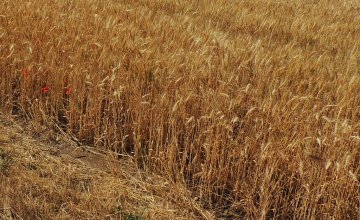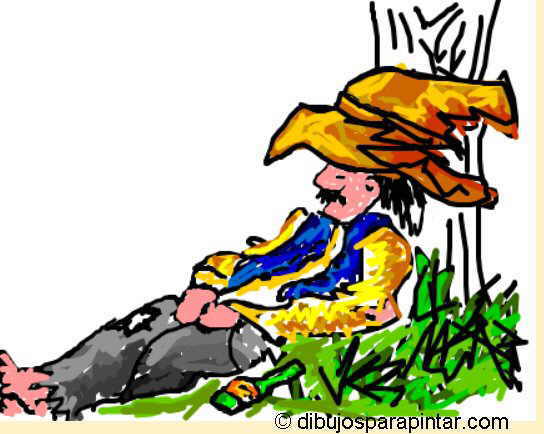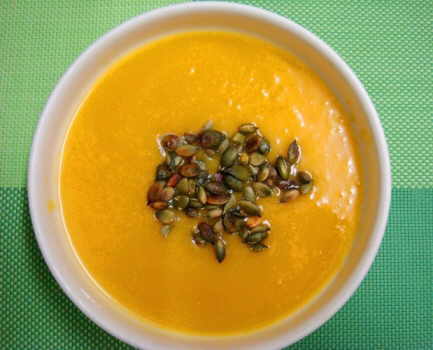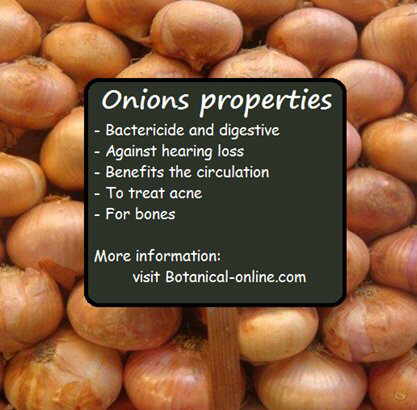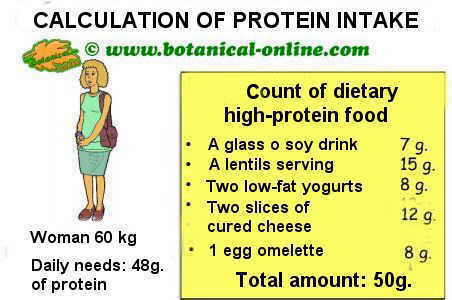Contents
- 1 Origins and evolution of Mediterranean diet
- 1.1 MEDITERRANEAN DIET HISTORY
- 1.2 Mediterranean inheritance
- 1.3 Origin of Mediterranean food
- 1.4 Indigenous foods of the Mediterranean region
- 1.5 Food brought in antiquity
- 1.6 Foods introduced from the Americas
- 1.7 A WALK THROUGH THE MEDITERRANEAN HISTORY
- 1.8 Egyptian Influence of Greco-Roman culture
- 1.9 The fall of the Empire
- 1.10 Nutrition and the clash of cultures
- 1.11 New World Food
- 1.12 Industrial revolution
Origins and evolution of Mediterranean diet
MEDITERRANEAN DIET HISTORY
Mediterranean inheritance
The Mediterranean diet is a dietary pattern and lifestyle, which has been shaped throughout history, the result of the crossroads of cultures that occurs in Mediterranean countries.
The Mediterranean Sea is a border sea between different cultures, an important link between East and West, a means of commerce and communication between civilizations.
Origin of Mediterranean food
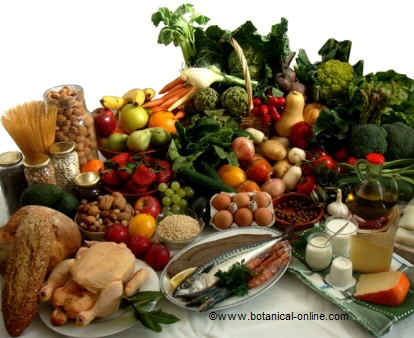
Mediterranean diet food
Many of the foods that make up the Mediterranean diet are foreign to its territory.
The favorable climate has allowed the introduction of new crops throughout history:
Foods from the Asian continent are more deep-rooted in nutrition, because they are most cereals, legumes and vegetables still consumed today. Many of these foods were already known by the Egyptians, Greeks and Romans. It is also worth highlighting the spice trade between East and West, which had great influence on the cuisine and culture (pepper, for example, was trading at price of gold)
In contrast, foods from America are more recent in Mediterranean culture, but its introduction was rapid, and led to the growth of European populations. We speak of the potato, which was a staple during periods of famine and war, as well as tomatoes that soon became the staple food of fried dishes.
Indigenous foods of the Mediterranean region
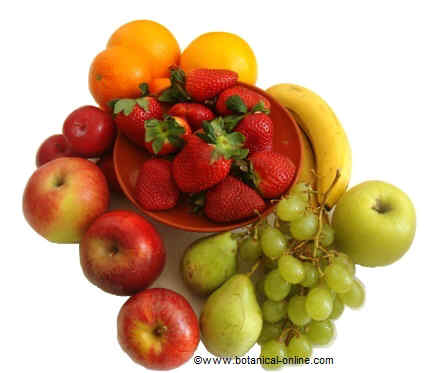
The Andalusian diet gave great importance to fruit. It passed it to the Mediterranean diet.
- Olive
- Borage, chard, capers, lupins, asparagus, watercress, mallow, thistle
- Grapes
- Beet, tiger nut
- Parsley, cumin, coriander, fennel, oregano, rosemary, sage, lemon balm, savory, fenugreek, bay leaf, saffron
- Mushrooms
Food brought in antiquity
- Rice, buckwheat, wheat, barley (Asia)
- Millet, sorghum (Africa)
- Chickpeas, soybeans, lentils, beans (Asia)
- Onions, garlic, leeks, cabbage, broccoli, cauliflower, turnips, spinach, cucumber, yam, arugula (Asia)
- Granada, bananas, coconuts, figs, apples, quince, pear, mango, plum, cherry, raspberry, lemon, cucumbers, kiwis, almonds, hazelnuts, walnuts, chestnuts (Asia)
- Artichokes, okra, (Africa)
- Watermelons, melons (Africa) Marjoram, tarragon, pepper, saffron, turmeric, cloves, ginger (Asia)
Foods introduced from the Americas
- Corn
- Beans, peanuts
- Tomatoes, peppers, eggplant, squash, zucchini, potato, sweet potato, prickly pears, cashews, sunflower seeds, avocado
- Coffee, chocolate
- Cayenne pepper, allspice, pink pepper
A WALK THROUGH THE MEDITERRANEAN HISTORY
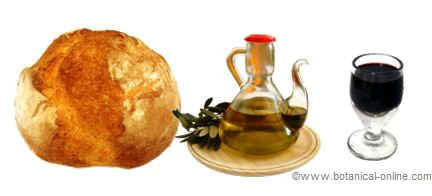
Bread, olive oil and wine in moderation are the mainstays of the Mediterranean diet.
Egyptian Influence of Greco-Roman culture
The Mediterranean diet has evolved with trade, conquests and wars that have taken place in its territory.
The Egyptians left important legacies such as making sourdough bread, one of the basic pillars of the Mediterranean diet. Egyptian food contained the food knowledge of African and Mediterranean, which in turn was influenced by Orient. The fish was present in the food supply, while hunting was less abundant. The Egyptian national drink was beer.
Greek culture showed a taste for the environment and nature walks, and conveyed what today is known as Mediterranean way, which comprises a way of eating in quantity and quality, active lifestyle and a more open disposition, which still exists today in the villages.
The nature worship is printed in mythology: Demeter, goddess of agriculture represented with a mane of wheat, or Dionysus, god of wine, or Persephone and the creation of the spring and winter.
The Greeks and Romans adopted the knowledge of the Egyptians in making bread, and wheat became the foundation of their diet. The olive tree was considered sacred, so that, if anyone harmed it, he/she was subjected to the penalty of banishment. Olive oil had its importance as a fuel for lighting and religious sites, and the wine was present at the celebrations. All this set the three pillars of the Mediterranean diet: wheat, grapes and olives.
The Arabs passed all his knowledge and food culture, where fruits and vegetables were of great importance. Iberian populations adopted this type of diet rich in vegetables, which endures to the present day and it is one of the emblems of Mediterranean diet. Marine products were no less important in the diet of coastal people.
The nature of this exceptional region is rich in spices such as bay leaf, thyme and rosemary, and their flavors are present in the taste of many Mediterranean dishes.
Until then, the meat was very present in the Mediterranean diet, and between animals the most consumed ones were poultry such as quails and chickens.
- All these influences shaped the foundations of the Mediterranean diet, with its three staples: bread, wine and olive oil. Because of its cultural importance and the survival of the people, these foods adopted the liturgical significance still know today.
The fall of the Empire
In the early Middle Ages, the Germanic defeated the Roman Empire. As with all the invasions, the barbarian people spread their culture and food, which was based on meat products. This is why the Germanic people collected the influence of the Celts, for whom the pig was a totem animal.
Meat became a staple, a symbol of strength and power, and became a noble delicacy. Herbs acquired new importance in the art of preserving and seasoning meat.
Just as in the Greco-Roman cuisine primary food was bread, meat became a staple now. Curiously, formerly it was known to be responsible for the nobility disease, that’s to say, the gout.
This disease has been associated, among other things, to excessive meat on the diet.
Also, the Germanic also adopted some Mediterranean foods, among which bread and wine as elements of Christian culture.
Nutrition and the clash of cultures
With subsequent Muslim conquests, the Mediterranean suffered a clash of cultures: what for some were staple foods for other were minor foods.
For example, the consumption of wine and pork was very common among Christian people, but they were not eaten by Muslims.
Food became more than ever a cultural element. Countries like Italy and Spain, for example, continue to maintain the culture of the ham, since the consumption of pork products was formerly associated to the Christian religion.
New World Food
Successive European conquests in the New World brought new imported foods to the Mediterranean culture that remain strong in the current diet. We talk about potato, tomato, eggplant, coffee or cocoa.
The times of war and famine led to increased consumption of these foods, just to the point of taking root in the food culture of European civilizations.
Industrial revolution
Food availability led to increases in European population. The incorporation of women as a workforce also marked differences when feeding, because women were responsible for the development and preparation of food and for culinary knowledge to pass on to subsequent generations.
The working society has no time to cook, or it has not given nutrition and dietetics the importance that in recent years it is receiving.
Major developments have resulted in a high population density, which is necessary to be fed by means of extensive agricultural, with the environmental impact that it entails.
The quality of the diet has changed, because people have began to practice more productive crops, such as spinach, to the detriment of traditional vegetables such as borage. For example, in some markets of Morocco vegetables like mallow are still traded, however they are forgotten by most Mediterranean cities.
Similarly, consumption of dairy and meat products has increased over the last century, to the detriment of basic foods such as bread and cereals.
![]() More information on the Mediterranean diet.
More information on the Mediterranean diet.


